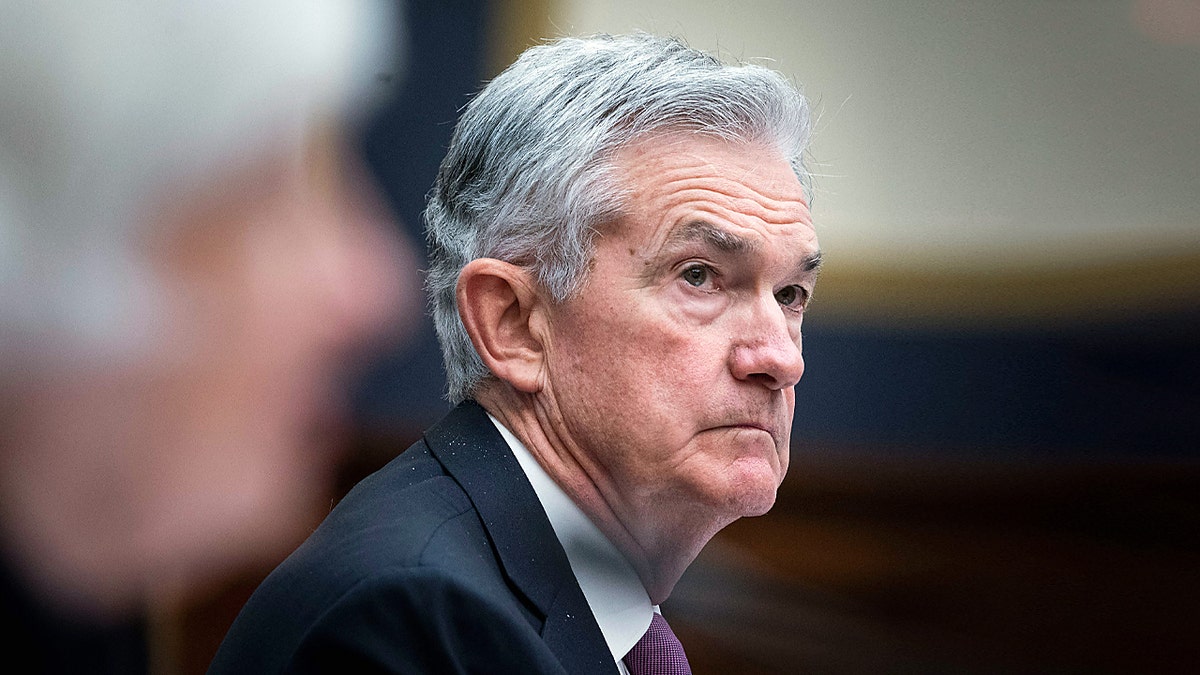WATCH LIVE: Billionaire businessman David Rubenstein interviews Federal Reserve Chair Jerome Powell about the state of the economy
They're expected to discuss the fight on inflation and Fed's next steps toward economic recovery.
With Congress refusing to raise the statutory debt limit, some are calling on the U.S. Mint to create a single platinum coin and then "sell" it to the Federal Reserve for $1 trillion. If the Fed, plays along, it would pay for the coin by waving its hands and typing "1,000,000,000,000" on an excel sheet – thereby conjuring the needful dollars. Is this legitimate?
Congress granted the U.S. Mint the power to mint coins that honestly contain what they claim. For example, a one-ounce gold coin must contain one gold ounce. Creating a platinum coin with an imaginary price to fund government operations would mark a radical departure from the historic understanding of the role and powers of the mint.

Federal Reserve Chairman Jerome Powell testifies during a House hearing on Capitol Hill, Sept. 30, 2021. (Al Drago/AFP via Getty Images)
The United States Constitution (Article 1, Sec. 8, Clause 5) grants Congress "power To coin Money, regulate the Value thereof, and of foreign Coin, and fix the Standard of Weights and Measures." The Coinage Act of 1792 established the United States Mint for this purpose. It allowed citizens to convert gold, silver and other metals into coins issued by the government mint, which attested to the value and purity of those coins. This service was initially provided nearly free of charge, other than a small fee to cover the expenses of the process.
The mission of the Mint changed as it became an adjunct to the Federal Reserve, to which Congress delegated expansion or contraction of the money supply under the Federal Reserve Act of 1913. As a result, the mint retained responsibilities and powers delegated by Congress in Title 31 of the United States Code.. 31 U.S.C. §5111(a)(1), which instructs the secretary of the Treasury to produce the coins described in Section 5112 " in amounts the Secretary decides are necessary to meet the needs of the United States." Those coins, from pennies to half-dollars, are specified – along with their compositions – in 31 U.S.C. §5112.

The Federal Reserve building in Washington, D.C., on Jan. 22, 2008. (Chip Somodevilla/Getty Images)
DEMOCRATS' SPENDING THREATENS AMERICANS' HIGH STANDARD OF LIVING
Since the creation of the Mint, the treasurer has ensured that there are enough coins in circulation to ensure that those engaged in everyday commerce can conduct transactions without having to resort to giving change in candy, as is done in some countries with coin shortages. The Mint sends its newly minted coins to the Federal Reserve, which then distributes them to its member banks as needed.
The Mint produces about 14 billion coins – worth some $1.1 billion – each year. That’s roughly the same level of production as in 1976, despite massive population and economic growth. With more transactions being done via check or credit card, there has been no need for a large increase in coinage.
Congress further expressly authorized the Mint to strike commemorative coins and collectibles that may be sold to the public at a markup. It may also produce pure gold and silver coins – typically not used for everyday commercial transactions – sufficient "to meet public demand" and made available to the public at a cost not exceeding the production plus marketing expenses (Section 5112(i) and (f).
There is no reason to believe that Congress, when it enacted this statutory provision largely for the creation of souvenir coins, also intended to give the Mint effective control of the money supply, which is exactly what would happen if the Mint could issue coins in nonsense values like $1 trillion.
CLICK HERE TO GET THE OPINION NEWSLETTER
Furthermore, exercise of such power – even if lawful – would stoke economic mayhem by inducing unlimited increases in the amount of dollars in existence.
Today, Treasury has only very limited capacity to issue U.S. currency notes – only up to $300 million may be outstanding and in circulation. (31 U.S. Code Section 5115) and none may be held or used for reserve. These are not to be confused with Federal Reserve Notes we think of as cash. Although the U.S. Bureau of Engraving and Printing produces these notes, this is done at the behest of the Federal Reserve under the authority given the central bank by Congress under the Federal Reserve Act of 1913 that actually delegated responsibility over money creation to the Fed.
Minting $1 trillion coins dutifully bought by the Fed would effectively end the supposed independence of the Federal Reserve. Treasury has already dramatically eroded the separation between the politically motivated administration and the supposed neutral experts at the Federal Reserve by effectively forcing the Fed to buy trillions in new debt during COVID lockdowns.
CLICK HERE TO GET THE FOX NEWS APP
But never has the U.S. Mint used its limited minting authority as a mechanism to create coins with fake denominations for the purpose of funding government operations.
Such a concept lies in the realm of banana republics. Indeed, a trillion-dollar coin would further concentrate American monetary policy into the hands of one of the most reckless administrations in our nation’s history, while paving the way for much higher inflation in the future.
CLICK HERE TO READ MORE FROM JOEL GRIFFITH
Peter St. Onge is the think tank’s Mark A. Kolokotrones Fellow in Economic Freedom.



